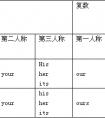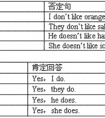婵犵數濮烽弫鍛婃叏閻㈠壊鏁婇柡宥庡幖缁愭淇婇妶鍛櫤闁哄拋浜缁樻媴閸撴彃鎮㈤梺鍝勵槸閻忔繈鈥栭崼銉︾厱婵°倕鎳嶉幉楣冩煛瀹€鈧崰鏍ь潖閼姐倐鍋撻悽鐧昏淇婃禒瀣拺缂佸鐏濋銏ゆ煕閵娿儲鍋ョ€殿喛顕ч埥澶娾堪閸涱垱婢戦梻浣告惈濞层劑宕戝☉娆戭浄婵せ鍋撴慨濠傛惈鏁堥柛銉戝喚鐎烽梻浣呵归鍡涘箰閼姐倗鐭氶弶鍫涘妿缁♀偓闂佹悶鍎撮崺鏍疾椤掑嫭鈷戦柟绋挎捣缁犳捇鎮楀鐓庡籍鐎规洘鍔欓弫鎰板炊閳哄喛绱冲┑鐐舵彧缁茶偐鍒掑▎鎾充紶闁惧繐婀辩壕濂告偣閸ャ劌绲绘い蹇d簽缁辨帡宕掑☉妯昏癁闂佽桨绀侀崐鍧楀箠閻愬搫唯鐟滃繗鍊撮梻鍌氬€风欢姘缚瑜戦崝褰掓⒑闁偛鑻晶鎾煛娴gǹ鏆g€规洘甯掗埥澶婎潩椤掆偓缁犲搫鈹戦敍鍕杭闁稿﹥娲滈幑銏ゅ箛椤旂懓浜炬慨姗嗗墮濡插宕¢柆宥嗙厵闂傚倸顕崝宥夋煟閹惧瓨绀嬮柡灞炬礉缁犳盯濡疯閿涚喖姊洪崨濠勬喛闁稿鎹囧缁樻媴娓氼垱鏁┑鐐叉噺濞叉牜鍙呴梺鍝勭▉閸欏繒绱為弽銊х瘈闂傚牊渚楅崕蹇涘船椤栫偞鈷戦梻鍫熺〒缁犲啿鈹戦鎸庣彧缂佹梻鍠栧鎾閳锯偓閹疯櫣绱撴担鍓插剱閻庣瑳鍐胯€块柡澶庯骏閳ь剚甯掗~婵嬵敇瑜庨悿渚€鎮楃憴鍕婵炲弶鐗犻敐鐐测堪閸繄鍔﹀銈嗗坊閸嬫挻銇勯銏㈢缂佺粯绻傞~婵嬵敆閸岋妇搴婇梻鍌欑窔濞佳囨偋閸℃稑绠犻煫鍥ㄧ⊕閸婂爼鏌¢崶鈺佸壉婵炴挸顭烽弻鏇㈠醇濠靛棙娈梺璇叉禋娴滎亪寮诲☉銏犖╅柕澶堝労閺嗐垻绱撴笟鍥ф灈妞ゆ垵鎳橀、姗€宕楅悡搴g獮婵犵數濮抽懗鍫曟倷婵犲洦鈷掑ù锝呮啞閸熺偞绻涚拠褏鐣电€规洘鍨垮畷鍗炩槈鏉堛劍娅撻柣搴″帨閸嬫捇鏌涢弴銊ュ幋闁归绮换娑㈠箻绾惧顥濆┑鐐茬湴閸婃洟顢氶敐鍥ㄥ磯闁靛ě鍜冪闯闁诲骸绠嶉崕鎵矆娴e湱顩查柛鎾楀懐锛濋梺绋挎湰閻熝囧礉瀹ュ棙鍙忓┑鐘插亞閻撹偐鈧娲戦崡鍐差嚕娴犲鏁囬柣鎰嚟閳ь剦鍓熼幃妤呯嵁閸喖濮庡銈忕細閸楀啿鐣烽幋锕€绀嬫い鏍ㄧ〒閸樹粙姊洪悷閭﹀殶闁稿绉剁槐鎾愁潩閼哥數鍘介梺鎸庣箓濡鍩㈤弴鐔稿弿濠电姴鍊归幆鍫ユ偂閵堝鍋eù锝堝Г閻濐亪鏌熼惂鍝ョМ婵﹨娅g划娆忊枎閹冨闂備礁鎲″鐟懊洪悢鐓庢槬闁靛繈鍊曠猾宥夋煕椤愶絿绠橀柛妯绘倐濮婃椽宕ㄦ繝浣虹箒闂佸摜濮甸悧鐘茬暦濠婂牜鏁嬮柍褜鍓欓~蹇撁洪鍕槶闂佸湱绮敮濠勮姳閼测晝纾藉ù锝囩摂閸ゆ瑧绱掓径瀣稇鐎规挸瀚板缁樼瑹閸パ冾潻缂備礁顦遍弫濠氬箖闄囩粻娑樷槈濞嗘垵骞堥梻浣规灱閺呮盯宕板顑芥灁闁哄啫鐗婇悡鍐喐濠婂牆绀堟繝闈涱儜缂嶆牕顭块懜闈涘闁汇倝绠栭弻娑㈩敃閿濆棛顦ㄩ梺绋款儐閸旀瑩寮昏缁犳盯鏁愰崨顒傜泿闁诲孩顔栭崰鏍п缚閿熺姴钃熼柨婵嗘閸庣喐銇勯弽銊х煂閺嶏繝姊绘担鍛婃喐濠殿喚鏁搁弫顕€鍨惧畷鍥ㄦ闂佺鎻粻鎴犵不婵犳碍鍊垫繛鎴烆仾椤忓牜鏁侀柟鍓х帛閻撶喖鏌i弬鎸庢喐闁瑰啿鍟撮幃妤€顫濋浣告濡炪値鍋呯换鍐ㄡ缚韫囨稑惟闁靛濡囬埀顒勭畺濮婄粯鎷呴搹鐟扮濡炪們鍔岄幊姗€骞冭瀹曞崬鈽夊▎鎴濆笓婵犵數濮撮敃銈夊箠閹邦喖顥氬┑鍌溓圭痪褔鏌涢锝団槈濠德ゆ硶缁辨帡鎮╅棃娑楁埛闂侀€炲苯澧叉い顐㈩槸鐓ら柍鍝勫暟缁€濠偯归敐鍛喐闁哄棴绠戦埞鎴﹀磼濠ф挾鎳撻弫顕€姊绘笟鈧ḿ褏鎹㈤幒鎾村弿闁惧浚鍋嗛悵鍫曟煛閸モ晛鏋旂紒鐘荤畺瀵爼宕煎┑鍡忔寖闂佸憡甯婇崡鎶藉蓟閻旂儤瀚氱憸蹇曞姬閳ь剟鎮楃憴鍕闁搞劋绲婚悘鎺楁⒑缁嬭法绠抽柛妯犲洤鍑犻柟杈鹃檮閳锋垹绱撴担鐧镐緵婵炲牊妫冮弻锝呂旈埀顒€螞濞戞艾鍨濇い鎾卞灩缁犳娊鏌熼崹顔兼殲妞ゆ梹妫冨铏圭磼濡搫顫岄梺瀹︽澘濡奸柣锝夘棑娴狅妇鎲撮敐鍡樻澑闂備焦鏋奸弲娑㈠疮椤栨粈鐒婇柨鏃堟暜閸嬫挾鎲撮崟顒傤槰闁汇埄鍨辩敮锟犲春閻愬搫绠i柨鏇楀亾妤犵偑鍨介弻宥囨偘閳ュ厖澹曢梻浣烘嚀椤曨參宕楀Ο渚綎缂備焦蓱婵挳鏌涘☉姗堝伐闁哄棗鐗撻弻锝夊閳轰胶浠梺绋款儑閸嬨倕顕i懠顒佸磯濞达絾娲樺Λ鍐ㄧ暦閵娾晩鏁婇柣鎾抽椤ユ帒鈹戦悩鍨毄闁稿绋戣灋婵炲棙鎸哥粻浼存煕濠靛嫬鍔滈柛蹇旂矒閺屽秷顧侀柛鎾寸懇閸╃偤骞嬮悙鑼枃闂備胶枪閿曘儱煤濠婂牆鐒垫い鎺嶇閸ゎ剟鏌涢幘璺烘瀻闁伙綁顥撻幉鎾礋椤掆偓椤庢挾绱撴笟鍥х仭婵炲弶锕㈤敐鐐差吋婢跺鎷洪梺鑽ゅ枑濠㈡﹢鍩涢弮鈧妵鍕箳閹捐泛寮ㄩ悗娈垮枔閸斿海妲愰幒鎳崇喖宕烽鐘垫毎闂佽娴烽幊鎾寸珶婵犲洤绐楅柡宥冨妽濞呯娀鏌熺紒銏犳灍闁绘挻绋戦湁闁挎繂鎳忛幉鎼佹嚃閺嶃劎绠鹃悗鐢登归鎾剁磼閻樿櫕宕屾鐐村姈缁绘繈宕橀妸褏鐛柣搴″帨閸嬫捇鎮楅敐搴″妞わ附婢橀埞鎴︽偐閸偅姣勯梺绋款儑閸嬨倕鐣疯ぐ鎺戦唶闁哄洨鍋熼鍥╃磽娴e壊鍎愰柨娑欐礀鐓ゆい蹇撳珋瑜嶉…璺ㄦ崉閻氭潙濮涘銈嗘煥濡瑧鎹㈠☉銏犵骇闁瑰瓨绻冮崐顖氣攽閻愭彃鎮戦柣鐔叉櫅閻g兘鏁愰崱娆戠槇闂佹悶鍎崝搴ㄥ储椤忓懐绡€闁靛骏绲剧涵楣冩煟濡も偓濡繈宕洪埀顒併亜閹哄秶璐版繛鍫熱缚缁辨帡顢欓懞銉閻庤娲栭妶绋款嚕閹绢喗鍋勯柛婵嗗婵″洭姊婚崒娆掑厡缁绢叀娉涘嵄闁告稒娼欓崒銊╂煟閿濆懎顦柛瀣尭椤繈鎮欓鈧锟�
—Will you ______tall buildings next year?—No, we are going to ______ a road next year.[ ]A. build, builtB.built, buildC.build, buildD.builded, builded-八年级英语
题文
| —Will you ______ tall buildings next year? —No, we are going to ______ a road next year. |
| [ ] |
| A. build, built B. built, build C. build, build D. builded, builded |
答案
| C |
据专家权威分析,试题“—Will you ______tall buildings next year?—No, we are going ..”主要考查你对 不定式,主谓一致 等考点的理解。关于这些考点的“档案”如下:
不定式主谓一致
考点名称:不定式
- 动词不定式:
指由to加上动词原形(而且只能是动词原形)所构成的一种非限定性动词,但在有些情况下to可以省略。
动词不定式在语法功能上可作主语、宾语、宾语补足语、表语、定语和状语。 - 动词不定式可以作以上各种成分,但它毕竟是动词,所以有动词的属性。
动词不定式及其短语还可以有自己的宾语、状语,虽然动词不定式在语法上没有表面上的直接主语,但它表达的意义是动作,这一动作一定由使动者发出。
这一使动者我们称之为逻辑主语,其形式如下:
时态 主动形式 被动形式 一般式 (not) to do (not) to be done 完成式 (not) to have done (not) to have been done 进行式 (not) to be doing 完成进行式 (not) to have been doing - 不定式的用法:
1、不定式作主语
例如:To remember this is very important.
注意:为了避免头重脚轻,在许多情况下,通常都将作主语的不定式置于句子后部,而在句首主语位置使用形式主语it。
例如:It is very important to remember this.
2、不定式作表语
例如:He seems to be ill.
注意:不定式作表语主要有三种情况,一是用于seem, appear, prove等系动词之后的不 定式(尤其是to be),
二是像My job is to sweep the floor. 这样的主语与表语“等价”的情形,
三是表示想法、约定、义务、命令、可能性、命运等,如:
You are to come when I call.
3、不定式作宾语
例如:I can not afford to buy a car.
注意:
①不定式不仅用作动词的宾语,还可用作个别介词(but, except)的宾语。
例如:I had no choice but to wait.
②当作宾语的不定式后跟有宾语补足语时,通常要用形式宾语it代替不定式,并将真正的宾语不定式置于宾语补足语之后
例如:I find it difficult to learn Japanese well.
4、不定式作宾语补足语
例如:Who taught you to drive?
5、不定式作定语
例如:I have a question to ask you.
注意:有的名词(如way, chance, right等)后用作不定式可换成of doing sth.
如:It is the best way to do (of doing) it.
但是以下名词后接不定式作定语时通常不能换成of doing sth.
attempt courage decision effort fortune failure invitation wish
6、不定式作状语
例如:I went to France to learn French.
考点名称:主谓一致
- 英语中的一致主要包括主语和谓语在人称和数上的一致、时态一致、名词和其代词的一致。
主语和谓语保持一致叫主谓一致,即谓语动词的形式必须随着主语单、复数形式的变化而变化。 - 主谓一致原则:
1、语法上的一致
所谓语法一致原则,即主语和谓语的语法形式在人称和数上取得一致。
谓语的单、复数形式依据主语的单、复数形式而定:主语为复数,谓语动词用复数;主语为单数或者是不可数名词,谓语动词用单数。
China belongs to the Third World. 中国属于第三世界。
We are sure he will come. 我们肯定他会来。
使用语法一致的情况
(1)当主语是and,both…and连接的并列结构
如果主语指的是两个或两个以上的人或物,则谓语动词用复数。
My mother and I have seen the film. 我妈妈和我已看过这部电影。
Both rice and wheat are grown in this part of China. 在中国的这个地方既种稻子又种小麦。
注意:由and连接的并列主语前面分别有each,every,no修饰时,其谓语动词用单数形式。
Every boy and every girl has to receive education in our country. 在我国每一个男女孩子都得受教育。
No student and no teacher was invited to the party. 师生没有被邀请参加晚会。
(2)主语后面接说明主语的修饰语
主语后面接说明主语的修饰语如:
with,along with,together with,as well as,like,rather than,but,except,besides,including,in addition to,
谓语动词不受修饰成分的影响,仍保持同主语一致的关系。
The teacher with two students was at the meeting. 那位老师和两个学生参加了会议。
The girl as well as the boys has learned to drive a car. 这个姑娘和男孩子一道,也学会了开汽车。
A library with five thousand books is offered to the nation as a gift.一个有5000册书的图书馆作为礼物赠送给了国家。
E-mail, as well as telephones, is playing an important part in daily communication.电邮和电话在日常的通信中起着很重要的作用。
Nobody but Jane knows the secret.只有简知道这个秘密。
All but one were here just now. 刚才除了一个人外都来了。
(3)非谓语动词或从句作主语
非谓语动词 (动词的-ing形式、不定式)或从句作主语时,谓语一般用单数形式。
When and where to build the new factory is not decided yet.什么时候在什么地方建新工厂还没定下来。
Checking information is very important. 核实事实是非常重要的。
To learn foreign languages is not easy. 学习外语并非易事。
When we will hold the meeting is not decided yet. 我们何时开会尚未决定。
注意:当what引导主语从句或由 and连接两个动词不定式或动名词作主语时,谓语动词的数应根据意义一致的原则来决定。
What we need here is money.我们这里需要的是资金。
What we need here are workers.我们这里需要的是工人。
Lying and stealing are immoral.说谎与偷窃是不道德的。
(4)each和复合不定代词作主语
each和some/any/no//every十body/one/thing构成的复合不定代词:
anyone、anybody、anything、everyone、everybody、everything、someone、somebody、something、no one、nobody、nothing、each、the other作主语,谓语动词用单数。
Each is worse than the one before. 一个比一个差。
Nobody knows the answer. 没有一个人知道这答案。
Someone wants to see you. 有人想见你。
Is there anything in the box?箱子里有什么东西吗?
There is a lot of milk in the bottle. 瓶子里有很多奶。
(5)“many a +单数名词”作主语
“many a、(很多)/more than one(不只一个)+单数名词”作主语时,谓语动词用单数形式。
Many a student has been to Beijing. 很多学生去过北京。
There is more than one answer to your question. 你的问题不只有一个答案。
- 最新内容
- 相关内容
- 网友推荐
- 图文推荐
上一篇:He is learning ________ a car though it is not easy for me.[ ]A. drive B. drivingC. to drive D. drives-八年级英语
下一篇:用单词或短语的适当形式填空。build, teach, act, interest, communicate with, keep, talk, retire, move to, be, fax sound ,travel, big1.Parents found it hard to ___-八年级英语
零零教育社区:论坛热帖子
| [家长教育] 孩子为什么会和父母感情疏离? (2019-07-14) |
| [教师分享] 给远方姐姐的一封信 (2018-11-07) |
| [教师分享] 伸缩门 (2018-11-07) |
| [教师分享] 回家乡 (2018-11-07) |
| [教师分享] 是风味也是人间 (2018-11-07) |
| [教师分享] 一句格言的启示 (2018-11-07) |
| [教师分享] 无规矩不成方圆 (2018-11-07) |
| [教师分享] 第十届全国教育名家论坛有感(二) (2018-11-07) |
| [教师分享] 贪玩的小狗 (2018-11-07) |
| [教师分享] 未命名文章 (2018-11-07) |


![Sunday is my birthday. I would like _____ a birthday party, would you _____to my party? [ ]A. have; come B. to have; to come C. have; to come D. to have-七年级英语](http://www.00-edu.com/d/file/ks/4/2/budingshi/2020-01-08/smalla85122db0c71d7fb6ae58187be7f1fd11578430330.png)

![Why areyou here? You are supposed ______ in the classroom now. [ ] A. to studyB. to be studiedC. studying D. to be studying -九年级英语](http://www.00-edu.com/d/file/ks/4/2/budingshi/2020-01-08/small6dee02daa62cac1c71853ac804ab4fbd1578422460.png)
![She is very poor. Little food _____ and no room _____! [ ]A. to eat, to live B. to eat, to live in C. eating, living -八年级英语](http://www.00-edu.com/d/file/ks/4/2/budingshi/2020-01-09/small17b77c2697a3ef8f1461d0d14b016ee51578585185.png)


